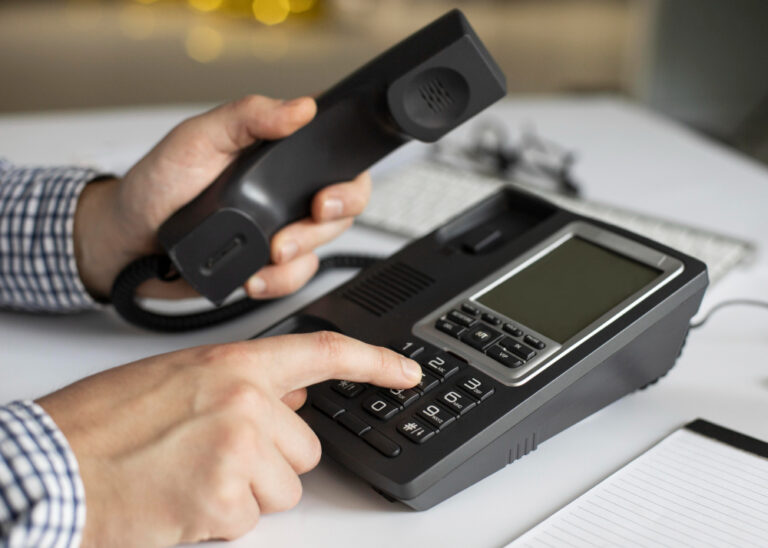Introduced into common usage in 2009, BYOD, an acronym for “Bring Your Own Device,” is a policy where employees use their personal devices, such as smartphones, laptops, or tablets, for work purposes. This approach is common in many workplaces and allows employees to use the devices they are most comfortable with, potentially increasing flexibility and productivity.
However, despite its popularity, the question of “Is BYOD entirely risk-free” looms over the minds of decision-makers in every organisation.
The integration of personal devices into the workplace environment introduces a spectrum of potential challenges and security concerns from data breaches to compliance issues that demand careful consideration and strategic management. While embracing the undeniable benefits of BYOD, addressing the associated risks becomes a strategic imperative. Explore further to unveil the challenges, equipping yourself with insights to proactively mitigate them before they evolve into formidable roadblocks.
10 Challenges of BYOD Security
Data Leakage
Data leakage, also known as data loss or data spill, refers to the unauthorised or unintentional transmission, disclosure, or exposure of sensitive or confidential information from an organisation’s internal network to an external destination. When employees use their personal devices for work purposes, there is a higher chance of sensitive company data being unintentionally or maliciously leaked through unauthorised access, improper handling of data, or insecure communication channels.
According to oaic.gov.au, a staggering 70% of data breaches stem from criminal activities, such as hacking, phishing, or malware infestations. Conversely, human error constitutes approximately 26% of data intrusion, involving unintentional actions like sending sensitive information to the wrong recipient, misconfigurations, or the accidental loss of devices containing confidential data. The ramifications of data leakage are profound, posing a substantial security risk by potentially compromising sensitive information, intellectual property, customer data, or other proprietary content.
Lost or Stolen Devices
The integration of BYOD heightens the vulnerability of devices being lost or stolen, presenting a potential peril to sensitive information. In these scenarios, the outcomes can be grave, encompassing data intrusion and the peril of financial or reputational harm. Unauthorised individuals accessing the misplaced or stolen device may jeopardise sensitive data, spanning corporate emails, documents, customer information, or login credentials.
Unsupported Devices
The implementation of BYOD brings a diverse array of devices and operating systems into the corporate setting. However, not all these devices may align with the organisation’s security protocols, software, or network infrastructure. The presence of unsupported devices poses an inherent security risk, as they might lack essential security features or may be unable to comply with the company’s security policies. Effectively managing and securing this diverse range of unsupported devices becomes a complex task, demanding additional resources and efforts to establish and maintain consistent security practices throughout the organisation.
Malware and Virus Threats
Personal devices, which may lack the same level of antivirus protection as company-owned devices, become more susceptible to malware and virus attacks, posing a direct threat to corporate networks. Infected devices can compromise the security of the entire network, leading to data compromise, data loss, and disruptions to business operations. Employees may unknowingly download malicious apps, click on infected links, or access compromised websites, which can lead to the installation of malware or viruses on their devices. Once a device is infected, the malicious application or virus can spread to other devices on the network, including corporate systems and servers, compromising sensitive data and disrupting business operations.
Also Read: Essential Cybersecurity Tips For Small Businesses
Network Vulnerabilities
Network vulnerabilities are a significant BYOD security challenge when employees bring their own devices into the corporate network. It increases the potential entry points for attackers to exploit and gain unauthorised access. Personal devices may have weaker security configurations, outdated software, or unpatched vulnerabilities, making them attractive targets for hackers. These network vulnerabilities can be exploited through various means, such as malware attacks, phishing attempts, or brute-force attacks. Addressing these issues is crucial for fortifying network security and safeguarding against potential cyber threats.
Conquer your BYOD security hurdles with NSW IT. Combat network vulnerabilities through a robust cybersecurity approach.
Whether it’s personalised risk assessments or proactive employee training, NSWIT is your partner in stringent security. Take action now to entrust your organisation’s safety to the experts.
Insider Threats
While BYOD brings convenience and flexibility, it concurrently elevates the risk of insider threats. Employees, whether intentionally or unintentionally, might misuse their personal devices to access, steal, or disclose sensitive company information. Unintentional insider threats emerge when employees inadvertently compromise security due to negligence or a lack of awareness. For instance, an employee might unknowingly download a malicious app or click on a phishing link, consequently triggering a security breach.
Compliance Issues
Maintaining compliance with industry regulations and data protection laws becomes challenging when employees access and store sensitive data on personal devices, potentially leading to legal consequences. Companies must ensure compliance with policies and secure sensitive data, even on employee-owned devices, as non-compliance can damage customer trust and lead to penalties. Allowing employees to store confidential data on personal devices significantly raises the risk of compliance failure. Potential risks include inadequate security measures for data outside the office and unintentional sharing of private information with unauthorised individuals.
Interoperability Challenges
In the context of technology and information systems, interoperability ensures that diverse components can function together seamlessly. However, challenges may emerge when attempting to connect or coordinate systems with varying protocols, standards, or interfaces. These challenges can hinder the smooth exchange of data and functionality between different technologies, potentially affecting the overall efficiency and effectiveness of an organisation’s operations.
Interoperability challenges become particularly pronounced in environments featuring a mix of devices, platforms, or applications, exemplified by the implementation of a BYOD program. For instance, inconsistencies in supporting security protocols or encryption standards across different operating systems and device models may lead to security gaps, exposing the ability to enforce uniform security strategies.
Employee Turnover
In a BYOD environment, when an employee departs from the organisation, there exists a potential threat of unauthorised access to corporate data if appropriate provisioning procedures are not adhered to. The departure of employees, particularly those with access to sensitive information, poses a data security risk. It is imperative to implement thorough offboarding processes to guarantee that departing employees no longer possess unauthorised access to corporate data, systems, or confidential information. Ineffectively managing employee turnover may result in security breaches, data leaks, and disruptions in business operations.
Inadequate Employee Training
The effectiveness of BYOD security is greatly dependent on employees’ awareness and responsible use of their devices. In the absence of proper training on BYOD security best practices, employees may unintentionally partake in risky behaviours, such as connecting to insecure networks or downloading malicious apps. Insufficient training can impede employees’ effectiveness, leading to reduced productivity, errors, and potential security threats. Unaware of the risks, employees might download harmful applications, connect to unsecured Wi-Fi networks, or fall prey to phishing attempts. These actions expose sensitive company data, risking the overall security of the organisation.
Ways to Mitigate BYOD Risks
Adopting the convenience of employee-owned devices requires a strategic approach to reduce potential vulnerabilities. Here are essential strategies to successfully mitigate the risks associated with BYOD and protect your digital environment.
- Establish Clear BYOD Policies: Create and implement BYOD policies that outline acceptable use, security requirements, data handling procedures, and employee responsibilities. Clearly communicate BYOD security policies to all employees and ensure they understand and comply with them for successful BYOD rollout.
- Implement Device Management Solutions: Utilise mobile device management (MDM) or enterprise mobility management (EMM) solutions to enforce security controls, remotely manage devices, and ensure compliance with company policies. These solutions enable IT teams to enforce encryption, implement data-wiping capabilities, and enforce BYOD device-level security measures.
- Require Strong Authentication: Enhance mobile security by incorporating robust authentication methods like two-factor authentication (2FA) or biometric authentication. This additional layer of security ensures heightened protection when accessing company resources or sensitive data.
- Regularly Update and Patch Devices: Optimise the security of personal devices by ensuring regular updates of operating systems, security patches, and software through NSWIT’s comprehensive patch management system. Encourage employees to enable automatic updates whenever possible, reinforcing a proactive approach to device security.
- Enforce endpoint security: Endpoint security solutions involve implementing a range of security measures to safeguard individual devices from potential risks. This includes deploying antivirus software, firewalls, intrusion prevention systems, encryption tools, and other security strategies.
- Separate Work and Personal Data: Promote secure practices by urging employees to separate work-related data from personal information on their devices, especially crucial in the context of remote work. This can be achieved through containerisation or virtualisation solutions that isolate work-related applications and data from personal apps and information.
- Conduct Regular Security Awareness Training: Empower your workforce with NSWIT cybersecurity training, equipping them with knowledge on BYOD risks, best practices for securing their devices, and skills to recognise and respond to potential security threats. Consistently reinforce company security awareness through regular training sessions and communication channels.
- Monitor and Audit Device Usage: Implement monitoring and auditing mechanisms to detect any suspicious activities or policy violations. Regularly review device logs, access logs, and network traffic to identify and respond to potential security incidents.
NSW IT for your Security Solution
The adoption of BYOD practices has become an undeniable force, driving innovation and efficiency. However, with this empowerment comes an array of risks that demand our immediate attention. It is imperative to recognise the potential vulnerabilities that BYOD introduces and take decisive action to fortify our digital landscapes. Your organisation’s security is not a compromise – it’s a commitment.
Our adept team stands ready to mitigate BYOD security risks through the implementation of robust security applications, enhancing your organisation’s resilience. Seize this opportunity to secure your data, safeguard your assets, and usher in a future where technology seamlessly aligns with your objectives. Reach out to us today and embark on a transformative journey toward a secure and prosperous digital landscape. Your organisation deserves nothing less than a fortified future – make it happen now.










